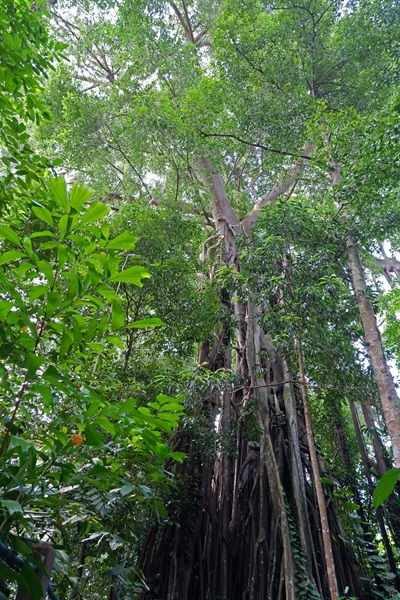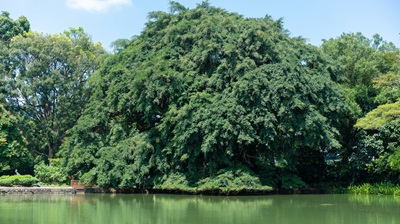Exhibition @ Centre for Ethnobotany
Ethnobotany and Diversity of Figs
Exhibition runs from 2 Mar 2024 to 1 Sep 2024
Venue: Level 2, Centre for Ethnobotany (Ethnobotany Garden)
Nearest Entrance: Bukit Timah Gate (Botanic Gardens MRT)
Open Daily from 9am – 6pm (Closed on the last Wednesday of every month)
Admission is free
There are over 850 species of figs (genus Ficus) in the world, representing a wide variety of growth forms including freestanding trees, strangling epiphytes, climbing vines and shrubs. Figs have great ecological and cultural importance. Some well-known members include the Common Fig (Ficus carica), known for its edible fruits and cultural importance in Europe and the Middle East; the ancient Egyptian Tree of Life (Ficus sycomorus); the Bodhi Tree (Ficus religiosa) sacred to Buddhists and Hindus; and the Indian Banyan tree (Ficus benghalensis), an individual of which holds the Guinness World Record for the largest canopy on a living tree (occupying roughly four soccer fields)! Figs are also valuable as urban trees, ornamentals and houseplants.
This exhibition showcases the diversity and ethnobotany of figs, with a particular focus on the species native to Singapore and Southeast Asia. Many fig species can be observed in the Singapore Botanic Gardens, such as in the Rain Forest, the Jacob Ballas Children’s Garden, Eco-Garden and at various other locations.

The Johor Fig (Ficus kerkhovenii) Heritage Tree in the Singapore Botanic Gardens Rain Forest. This species is a strangling fig found in lowland forests from Peninsular Malaysia and Singapore to Sumatra, Borneo and Java. Photo: L. Neo.

_hero.jpg?h=226&w=400)
The Burmese Banyan (Ficus kurzii) can be seen along Swan Lake and at Lawn A where there is an individual which is thought to be as old as the Gardens itself! Photo: S.K. Ganesan.




